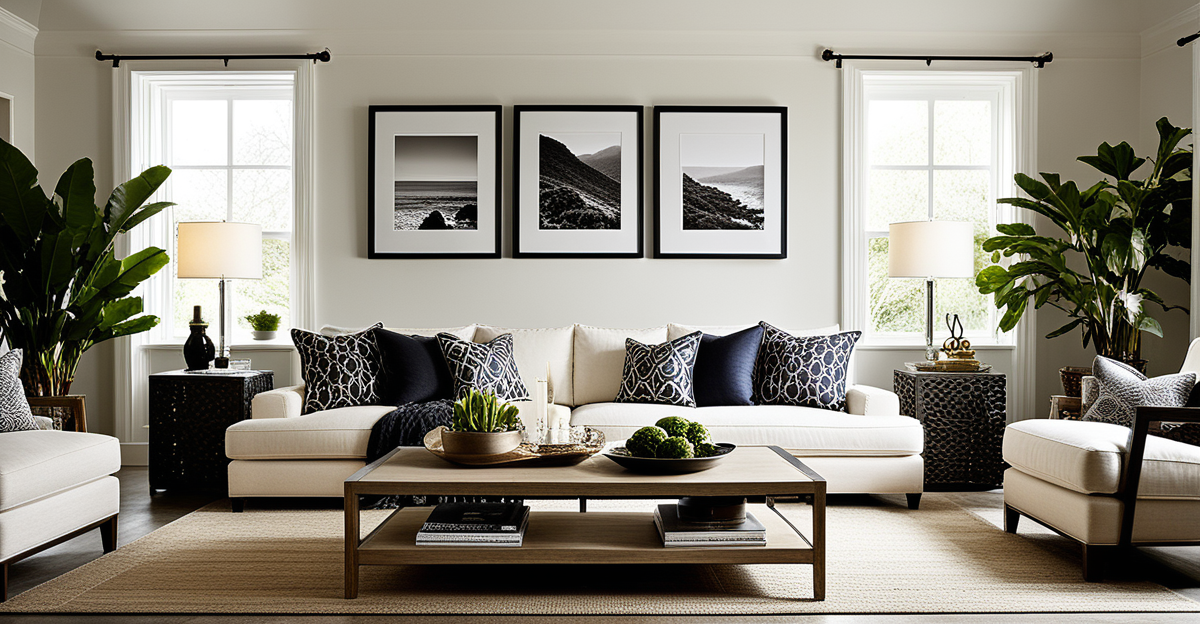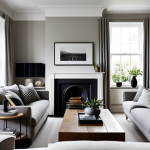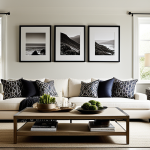Home Décor’s Impact on Lifestyle and Well-Being
Creating a personal environment that reflects individual tastes profoundly shapes daily habits and routines. When your living space harmonizes with your lifestyle, it naturally fosters comfort and encourages positive behavior patterns. For example, a clutter-free, thoughtfully decorated room can boost your mood and productivity, while chaotic spaces may contribute to stress and distraction.
The connection between home décor influence and emotional health is supported by numerous studies in environmental psychology. Colors, textures, and object placement affect feelings of safety, calm, or stimulation, directly impacting mental well-being. An inviting space can reduce anxiety and enhance relaxation, making it easier to unwind after busy days.
Also to see : What Are the Most Common Interior Design Mistakes to Avoid in UK Homes?
Experts emphasize that the personal environment acts as an external extension of one’s inner state. By intentionally designing areas to meet emotional and functional needs, individuals can improve psychological well-being significantly. This means prioritizing elements that promote peace, joy, or focus depending on your unique lifestyle, leading to lasting improvements in mood and overall quality of life.
The Psychology of Color and Material Choices
Selecting the right color palettes deeply influences mood and emotional well-being. Colors evoke specific psychological responses: soft blues and greens tend to promote calm and relaxation, while vibrant reds and oranges can energize and stimulate. Understanding color psychology allows you to tailor your personal environment to support your mental state effectively. For example, bedroom walls painted in tranquil hues may enhance sleep quality, positively affecting overall well-being.
Also to see : What Are the Most Common Interior Design Mistakes to Avoid in UK Homes?
Similarly, material selection plays a critical role in comfort and mood enhancement. Natural materials like wood and cotton create a warm, inviting atmosphere, while sleek metals and glass can feel modern but sometimes less cozy. Textures influence tactile sensations that impact relaxation; soft fabrics encourage restfulness, while rough or cold surfaces might evoke alertness or tension.
Practical tips for choosing colors and materials include:
- Align colors with desired mood outcomes (e.g., calmness, focus)
- Use textures that complement daily activities—for instance, plush textiles where you relax, sturdy surfaces in work areas
- Balance visual and tactile elements to foster both comfort and stimulation
By thoughtfully combining color psychology and material choices, your home décor influence can significantly enhance emotional responses, tailoring your environment to support a healthier, more joyful lifestyle.
Furniture Arrangement and Its Effects on Productivity and Relaxation
Thoughtful furniture layout shapes how effectively a space supports your daily activities. Purpose-driven arrangements—distinct zones for work, rest, and socializing—enhance both productivity and relaxation by aligning your environment with your habits. For instance, placing a desk near natural light promotes alertness during tasks, while cozy seating areas encourage unwinding.
Spatial organization also plays a vital role in reducing mental clutter. A decluttered space, with clear sightlines and minimal distractions, helps maintain focus and lowers stress levels. Experts note that well-defined functional spaces contribute to psychological balance, boosting emotional well-being alongside physical comfort.
Real-life examples illustrate how simple layout changes transform experiences: repositioning furniture to open walkways can increase flow and ease, while integrating multi-use pieces supports versatility without sacrificing calmness. Strategic placement of storage keeps essentials accessible but out of sight, preserving serenity.
Prioritize aligning furniture arrangement with your lifestyle needs. Create zones that respond to how you work, rest, or connect. This enhances your personal environment by making it both functional and soothing, positively impacting your mood and overall well-being.
Home Décor’s Impact on Lifestyle and Well-Being
Personalized spaces profoundly shape daily habits by creating a personal environment aligned with your needs. When your home décor influence reflects your lifestyle, it nurtures routines that promote comfort and positive emotion. For example, arranging items that spark joy or calmness encourages you to spend more time in those spaces, reinforcing beneficial habits.
The relationship between home décor and emotional health is well-established. Thoughtful choices in design elements can reduce stress and foster a sense of security, directly influencing mood and overall well-being. This connection means your home is not just a backdrop but an active contributor to how you feel daily.
Experts in environmental psychology highlight that a supportive environment enhances psychological well-being by addressing emotional needs. When décor aligns with your lifestyle—whether through calming colors, meaningful art, or organized spaces—it supports mental balance and resilience. This intentional approach helps transform your home into a sanctuary that improves both mood and life quality consistently.
Home Décor’s Impact on Lifestyle and Well-Being
Your personal environment profoundly affects daily routines by shaping habits through intentional home décor influence. Spaces designed to reflect individual lifestyle preferences encourage behaviors that support comfort and productivity. For example, having calming areas dedicated to relaxation can strengthen the habit of unwinding after work, while energized zones may enhance focus during tasks.
The relationship between home décor and emotional health extends beyond aesthetics. Scientific studies show that thoughtful design choices reduce stress and elevate mood by creating feelings of safety and control. Colors, textures, and spatial arrangements interact to form an atmosphere that nurtures psychological balance and improves overall well-being.
Experts in environmental psychology emphasize the role of personalized spaces in fostering mental resilience. An environment tailored to your emotional needs becomes an external framework that supports positive psychological states. By consciously integrating elements that uplift mood—whether through soothing décor or organized layouts—your home can serve as a sanctuary that actively promotes mental health and enriches quality of life. This intentional approach transforms your living spaces into powerful tools for sustaining wellness aligned with your lifestyle.
Home Décor’s Impact on Lifestyle and Well-Being
The home décor influence directly shapes your personal environment, molding daily habits and routines that support your lifestyle. Personalized spaces encourage behaviors aligned with comfort and well-being by reflecting individual tastes and emotional needs. For example, dedicating areas for relaxation or focused work helps embed positive habits like unwinding or concentrating effectively.
How does home décor affect emotional health? The relationship is profound. Colors, textures, and spatial arrangements evoke psychological and physiological responses that impact mood and overall well-being. Creating environments that feel safe and nurturing reduces stress and enhances emotional resilience. This makes your home not just a physical space but a vital contributor to mental health.
Experts in environmental psychology emphasize that tailored décor acts as an external extension of internal states, fostering stability and positivity. By intentionally designing living spaces that resonate emotionally—through calming colors or organized layouts—your home supports psychological balance. This synergy between décor and lifestyle strengthens mental well-being, turning your personal environment into a sanctuary that sustains and enriches daily life.








